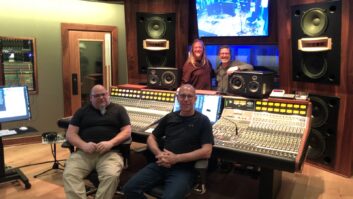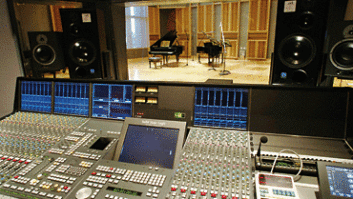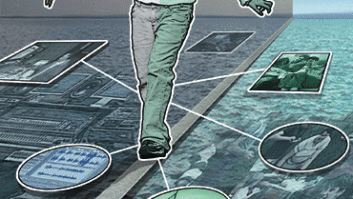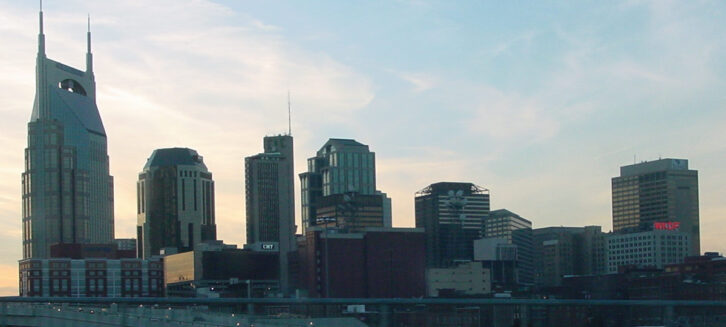
I dig Nashville. I always have. I like the energy, the authenticity, the music, the studio scene, the passion, the sense of community, the talent, the vibe, all of it. I’m used to dropping in every six months or so, but it had now been more than three years! And I was tired of Zooming!
While the itch was enough to get me on the plane, as co-editor of Mix, I also had a couple of goals in mind. First, I wanted to see all these immersive music rooms that have been popping up all over town. Every pre-trip email I sent got the reply, “You have to stop by and see my Atmos room!” And I only made it to Music Row and Berry Hill. I’m sure the story’s the same in Franklin, Murfreesboro and dozens of locations throughout Davidson and Williamson counties. It has to be the highest geographic concentration of Atmos rooms in music.
Second, I was scouting locations for Mix’s next immersive music event. Without revealing too much, I will say that it involves historic and modern studios on Music Row, along with a studio crawl, party and lots of immersive music playback in Berry Hill. Mark your calendars. It will be held on one of the Saturdays in May. It will be a good day.
And third, and perhaps most important, I just wanted to see some old friends.
So a week ago Sunday, I flew east into BNA and hooked up with my buddy Evan Bakke, a producer/engineer who flew west from Power Station New England studios to join me in a three-day whirlwind tour of some of Nashville’s finest.
After a Sunday night hang with Pat McMakin on his new back patio, sipping bourbon, catching up, and enjoying his wife Kelly’s most excellent Brunswick Stew, we retired to the Best Western on Music Row to get a little rest before heading out to Brentwood in the morning to see Chuck Ainlay….
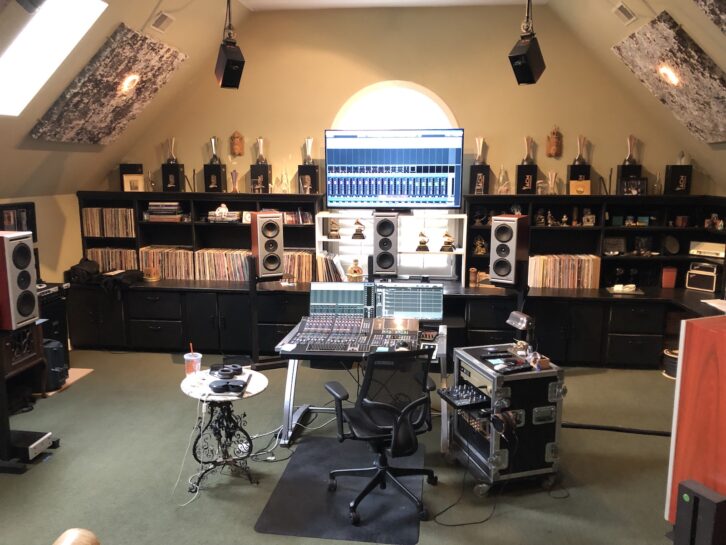
11:30 a.m.: Chuck Ainlay
I could gush for pages on Chuck’s body of work, dating back to Steve Earle (dude mixed Guitar Town!), Reba, the Judds, the Chicks, Mark Knopfler, Vince Gill, Taylor Swift, and of course, the great George Strait. I can’t think of a Nashville engineer, heck, any engineer, who has had such a consistent and quality body of work over the past 40 years, since he first drove south from Goshen, Ind., in the mid-’70s to attend Belmont University. I’ll stop gushing now. Mostly, he’s just a damn good guy.
He’s also been busy since the pandemic hit, both in his mixing work and in relocating his studio from his longtime base at Back Stage Studio along Music Row to his new home in Brentwood, where his spacious, kick-ass 7.1.4 room is centered around a Steinberg Nuendo/Nuage mix platform and Nova monitors for the LCR and surrounds, with JBLs in the ceiling. (A couple of days later, I would find out from someone else that Chuck has one of the only JBL Intonato monitor controllers in town, and despite the fact that they were recently discontinued, they are apparently in demand. He also has a set of JBL 7 Series monitors that he’s been wanting to audition. They recently arrived but are still in boxes. Hey, he’s been busy! We’ll check in with him in six months…
Over the course of the next hour or so, while talking all things Spatial and Atmos and lamenting the lack of fair pay—or even contact—for the engineers who are doing the mixes, Chuck played us some of his recent immersive work, starting with the Atmos mix of Lyle Lovett and His Large Band. Stunning. The Large Band, which includes Dean Parks, Russ Kunkel, Matt Rollings and so many more monster players, seemed immersive just by playing together, then you throw in Chuck’s mix…. Loved it.
Next, he put up a track from George Strait’s Troubadour. Absolutely gorgeous. That pure, rich voice filling up the room as the backgrounds float by. A very different mix than the Large Band, and equally tasty in the immersive space. Different feel, different approach, different artistic intent, and they both work wonderfully. Same as mixing stereo. That hasn’t changed. The use of space simply adds a new dimension. Chuck’s currently in the midst of a long-term project to remix the George Strait catalog in Atmos. Nobody could do it better. Thanks for the listen, Chuck. I can’t wait to hear more.

2:15 p.m.: Blackbird Academy
We had a date to visit John McBride and Blackbird Studio in Berry Hill on Wednesday. Monday was a day for talking to students at the Blackbird Academy, and since the theme of the week seemed to be immersive music, that’s what I talked about. Mostly, I tried to provide some history, especially as it relates to the film and television industries, dating back to the introduction of Dolby Digital 5.1 in 1991, DTS and Auro a few years later. Then on to the introduction of Dolby Atmos, DTS:X and Auro 3-D in or around 2012. Looking out at the 20 or so students, I had to keep reminding myself that many of them were only 9 or 10 years old at the time. I might need to update some of my cultural references in future presentations. I hope they weren’t bored…
Anyway, the bonus treat in talking to the Blackbird students is that it gives me a chance to catch up with Mark Rubel, the school’s director of education in the studio track. Mark is a born educator, with that rare ability to translate his own curious nature to students and make them want to explore and experiment and learn more. Plus, he’s great in the studio. He’s spent a lifetime of learning while teaching and teaching while learning. I can’t say enough about his commitment to the students. It’s noticeable when you walk in the room.
Then, as Mark walks us out and points across the street to our next stop, Jeff Balding’s studio, he mentions that he’s been working on a book, The Great American Recording Studios, as something of a follow-up to Howard Massey’s The Great British Recording Studios. I can’t wait to read it!
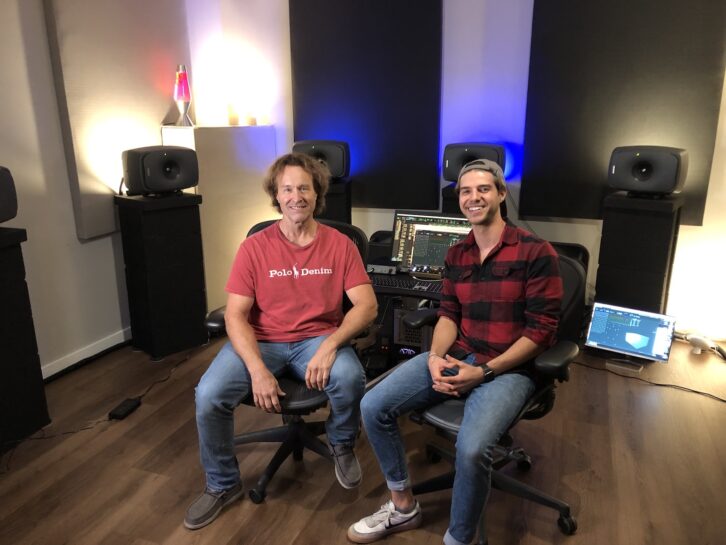
5:00 p.m.: Jeff Balding and Imogen Sound
It was a pleasure to finally meet producer/engineer Jeff Balding, and here he was, a golf shot away from Blackbird and three doors down from Ryan Hewitt’s new Dolby Atmos studio. In July 2021, Jeff opened Imogen Sound, a two-room 7.1.4 Dolby Atmos in-the-box mix studio with a minimal Pro Tools footprint, video monitor below the front speakers, near the floor, and a sweet-sounding, almost intimate Genelec monitor system, with 8351s LCR and surrounds, 8331s in the ceiling and two Genelec 12-inch subs.
His mix assistant, Tristan Ableson, works primarily out of the slightly smaller B studio, fully Atmos, as he preps tracks for mixing and for distribution.
While Jeff has a long history with Blake Shelton, Dan + Shay, Taylor Swift, Shania Twain and countless others, he chose to play Evan and I some new stuff from Cody Johnson, Bailey Zimmerman (huge on TikTok—a refrain that is becoming more and more real), Ingrid Andress, Brett Eldridge and a few others. He played it at moderate volume, no big furniture in the way, and it sounded like being in a living room. A really great-sounding living room. The intimacy in the tracks, punctuated by some good ol’ rockin’ guitar, was just plain warm and enveloping. Crystal clean and smooth at the same time. A room doesn’t have to be huge to sound great. Imogen Sound sounds great.

8:00 p.m.: Welcome to 1979
Evan had been craving some authentic BBQ, so after leaving Jeff Balding’s place around 7, we stopped in at Martin’s Bar-B-Que Joint on Ellston Place. Yum. He had the ribs, I had the brisket. We each had a pint. I figured we were done for the day, but at some point, Evan got a text, then looked at me and said, “So, are you done? You wanna go meet my friend at 1979?” It was Halloween night in Nashville, so we were off to 1979, where we hooked up with mastering engineer and disc cutter Josh Sebek.
Welcome to 1979 is absolutely unique; there’s nothing else like it in pro audio or recording, much less Nashville. Chris Mara has put together a multi-part operation in half a warehouse in the middle of a residential area in west Nashville. Inside, the ceilings are low, the wood on the studio walls has remained untouched, you can envision the shag carpeting from decades past. Vintage keyboards line the hallways, tape decks are in use daily, an Edison wax cylinder machine has pride of place in the kitchen. Kitschy audio objects from the past 100 years fill the nooks and crannies. Endless floor-to-ceiling shelves are filled with vinyl records.
That’s the studio half, where great records are recorded, mixed, mastered and finally ending up on a Neumann lathe, where the lacquers are cut. It’s one of the world’s great analog-pure operations. Then you cross the long hallway, stepping over the regulation shuffleboard set built into the concrete flooring, and step over to the manufacturing side of the business, where the masters go through an electroplating process involving nickel beads, multiple levels of QC, passing through about four more industrial-looking, high-precision machines before final stamping to send off to the plant. I had read all about Chris’ operation, but it’s something else to see up close.
Vinyl rules at Welcome to 1979, and as we’ve seen, there’s certainly a market for it. Chris Mara has something special going here, and he has for a while. This weekend, the studio is hosting its annual recording summit, where things kick off on Friday night with a “Live to Vinyl” recording session. Again, no place like it.
That’s enough for one day. Check back tomorrow for visits to Curb Studios, Starstruck, Ocean Way, Belmont and much more.
